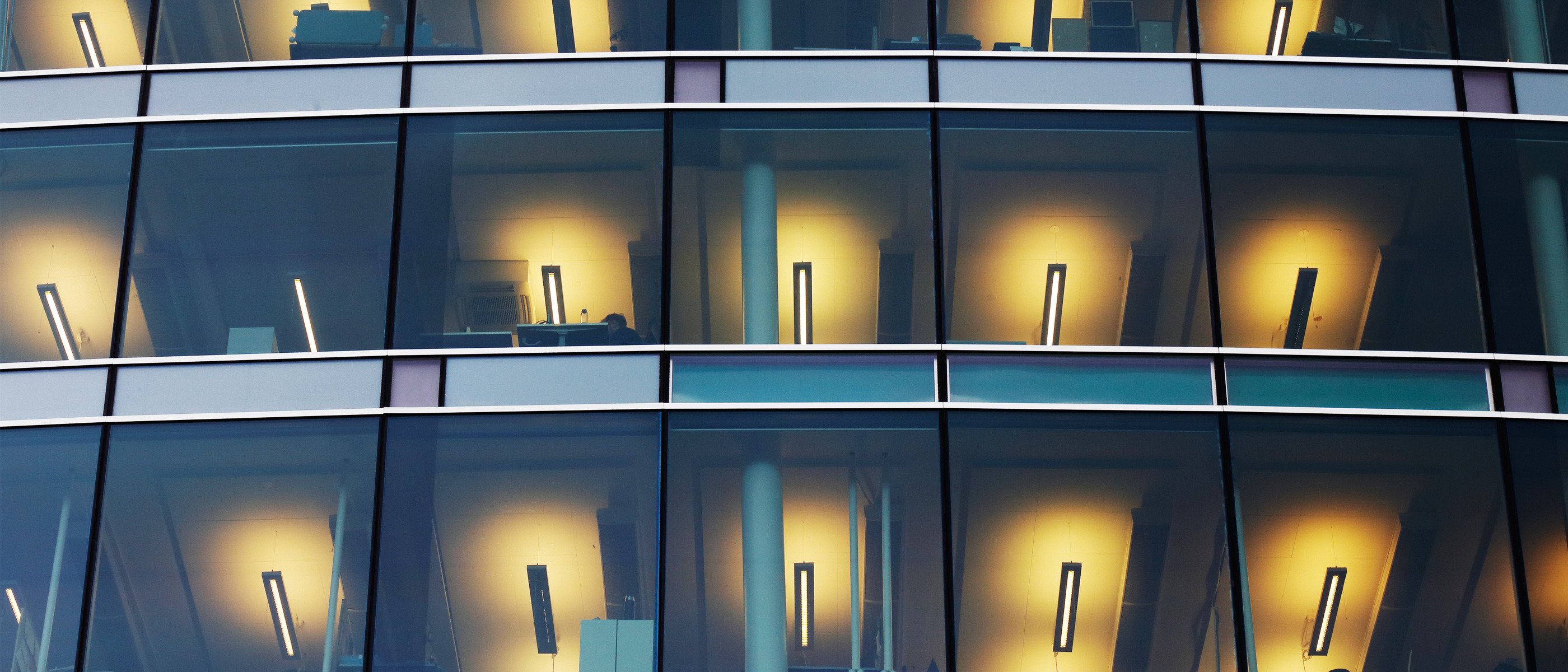Energy Efficiency | April 30, 2021
4 Tips for Distribution Center Energy Efficiency
The efficiency of a distribution center is one of the differentiators between a well-run warehouse and one that struggles to keep up. Efficiency in picking, packing, loading, shelving – running a distribution center with efficiency means rapid process. Speed = success along the supply chain. But while the term “efficiency” here refers to the productivity and effectiveness of receiving or filling orders, energy efficiency can also have a big impact on distribution facilities. Energy savings in warehouses and distribution centers is not only rooted in upgrades that improve the facility space, but these savings result in valuable decreases to a distribution center’s utility bills as well.
Benefits of an energy strategy in the distribution industry
A Manager of System Engineering, writing for Supply Chain Digital, stated:
“Implementing sustainable practices throughout a warehouse will not only save money for the organization, but will increase customer goodwill. Don’t think of sustainability in terms of costs; think of it as an investment resulting in revenue savings—a better bottom line and a better image that win the respect of your customers and your community.”
This is the fundamental reality of implementing an energy strategy for facilities responsible for distribution and warehousing: smart energy use results in better business. It’s that simple. Many warehouse spaces aren’t overly complex: high ceilings, large square footage and varying foot traffic depending on the space. This means most sustainability strategies for these buildings can quickly target inefficiencies and start reaping benefits right away.
Cost savings and improved power usage are the top benefits for warehouse energy efficiency. Additional benefits can include: better visibility, faster production, improved comfort, longer equipment lifespan, increased morale and more.
Energy efficiency solutions for warehouses or distribution centers
The top energy efficiency options for warehouses or distribution sensors include upgrading fixtures to LED lighting; making systems as smart as possible with built-in, added or integrated controls; and strategic HVAC evaluations for potential savings. This is still a broad list though, so we’ve broken down the following items to narrow in on exactly how you can be saving more energy – and dollars – in a warehouse or similar type of building.
Industry Week describes the top 5 challenges of warehouses along the supply chain as: “inventory accuracy, inventory location, space utilization/warehouse layout, redundant processes and picking optimization.”
Energy efficiency is an ideal opportunity for building managers to mitigate some of these challenges, while decreasing annual operating costs.
4 tips for better energy efficiency in distribution centers
As an efficiency project professional, here are my top 4 tips for how distribution facilities can get better energy efficiency and see significant gains.
1. Get better visibility while decreasing power usage
This is number one on the list because we can’t overstate it: upgrading your lighting to LED is going to seriously improve visibility in most warehouses and distribution center facilities. Higher light levels can be achieved at a fraction of the prior energy usage.
-1.png?width=1500&name=BEFORE%20(1)-1.png)
2. Use occupancy sensors in warehouse aisles
Many warehouses or distribution centers run on multiple shifts, sometimes with 24/7 hours. We saw this situation at a client’s facility where they operated 24 hours a day but were not always at full capacity. They ran a skeleton crew for 3rd shift, meaning the space wasn’t fully occupied. Adding occupancy sensors to the lighting design enabled fixtures to ramp up when needed and dim back down if aisles or other locations didn’t have workers present.
This added security and support for management because lighting that triggers on and off helps crews keep track of where people are in building at any given time.
3. Zone fixtures around security cameras
There are tons of security cameras in distribution centers. With lots of activity and product moving in and out of the facility, security is of high importance to most warehouses and distribution center facilities.
We often create lighting design that includes programming fixtures never to dim near cameras so as not to distort surveillance footage. While most fixtures should be decreasing output when not needed, this is an example where proper zoning can allow for efficiency in other parts of the facility without compromising security systems.
4. Tie HVAC into controls system
Whether you have a large-scale building automation system (BAS) or are choosing equipment with VFDs and built-in sensors, integrating HVAC with intelligent control is a quick way for any warehouse to find greater savings.
We worked with one client who installed air handlers purely to exchange air by pulling out hot air from the top of the warehouse and replace it with naturally cooler air from the first-floor level. The AHUs ramped up and down to circulate this air based on temperature. So, while it wasn’t connected into a BAS with lighting and other building controls, it was an easy way for this client to improve comfort in the facility without wasting a huge amount of energy.
In general, distribution centers are so big that they can benefit from tying systems together to uncover savings. Every footprint is different so every configuration of controls can be changed to meet the building’s needs.
Efficiency in all things: distribution centers
Efficiency process AND efficient energy use are both key to optimal operations in warehouses and distribution centers. In the last year, we’ve seen how COVID-19 has affected work schedules and depending on the product in question, warehouses have ramped up or down to meet demand. Properly engineering systems can meet the needs of a building without overextending systems and wasting energy, which we can all see in the resulting utility bill.
Efficiency solutions for distribution centers can be specifically designed to meet the needs of this particular industry. It’s time to take advantage of them.
Want to read more about this topic?
This article examines sustainable buildings and less common benefits of building for efficiency »
This article explores lesser-known benefits associated with LED lighting »
Related Posts
Discover more content and insights from Mantis Innovation

Energy Assessments: Key Insights for Unlocking Efficiencies
Fulfilling your business’ energy efficiency goals is like planning a big trip. There are various steps, routes, and methods to reach the end destination, but some may be better suited to your

The Cost of Inaction: Why Businesses Should Act Now on Energy Efficiency
In today's fast-paced business environment, the financial and operational losses businesses incur by delaying energy efficiency improvements, the "cost of inaction," is more relevant than ever.

In today’s AI era, human intelligence is the key to data center facility and energy optimization
Nowhere else in modern industry do artificial and human intelligence converge with such transformative potential as in the world of data centers. As AI's extraordinary growth accelerates demand for

Your Guide to LED Lighting for Business and Commercial Buildings
Never to be underestimated, LED lighting and well-designed lighting retrofits and upgrades offer businesses big improvements like reduced energy costs, reduced emissions, and improved working
